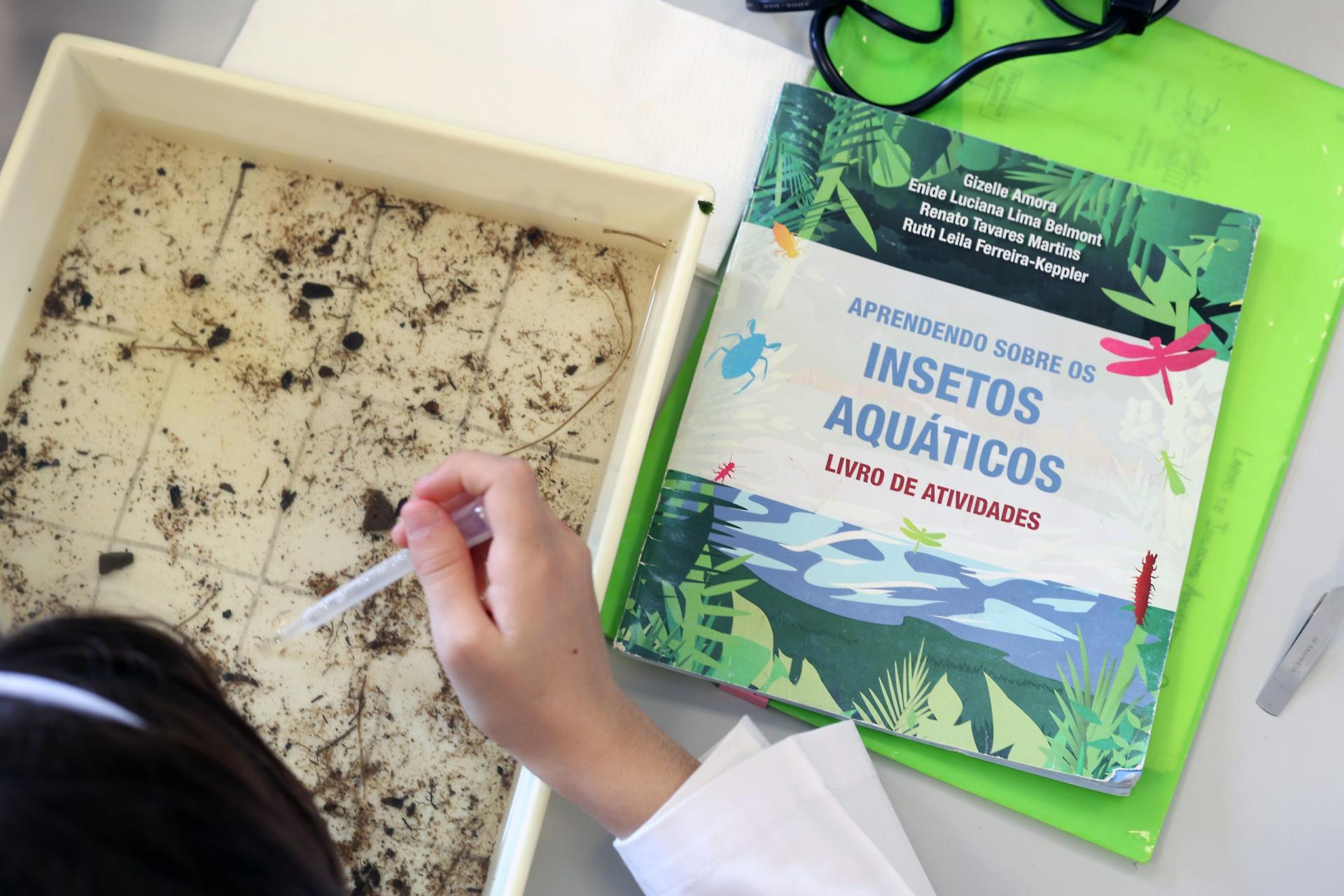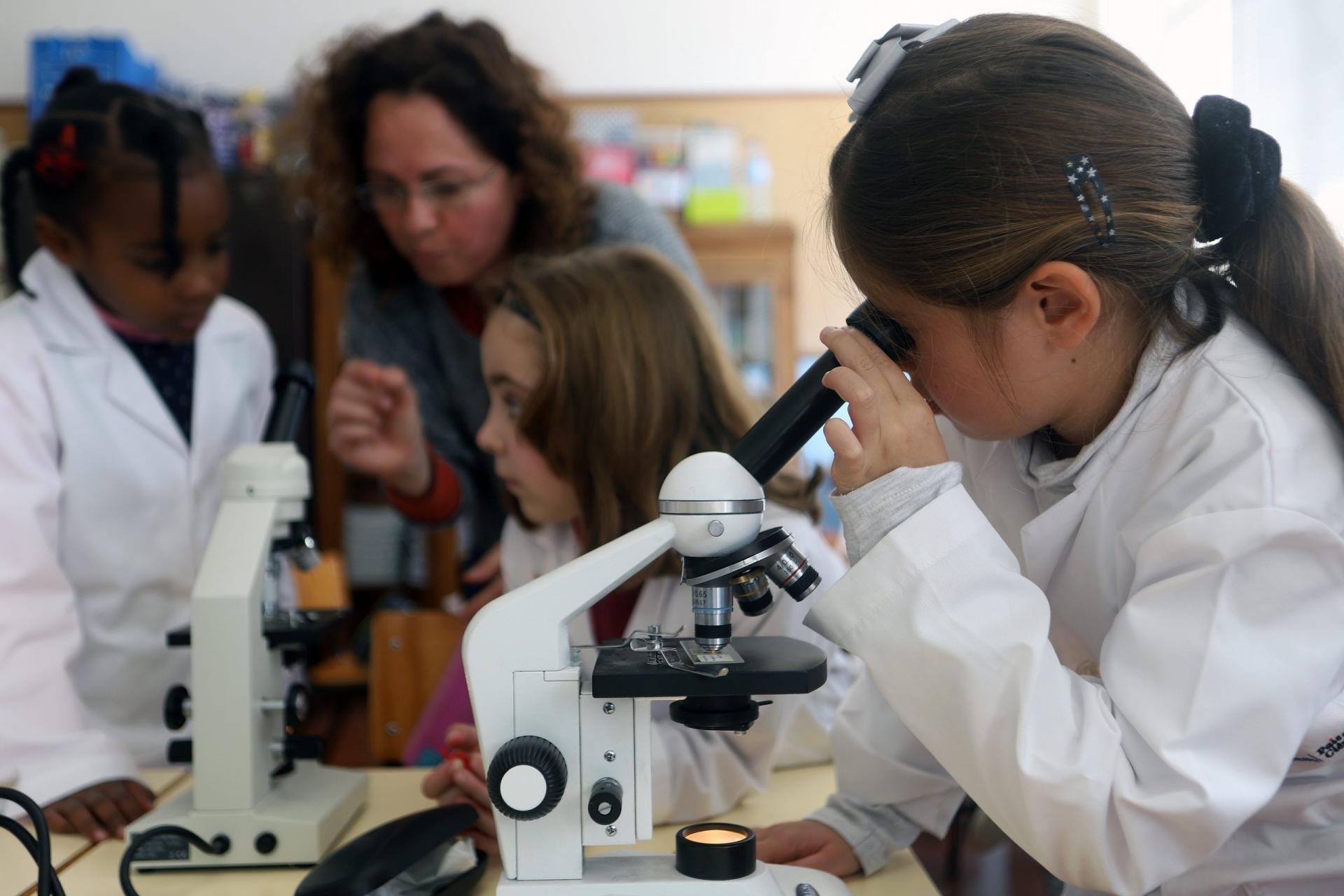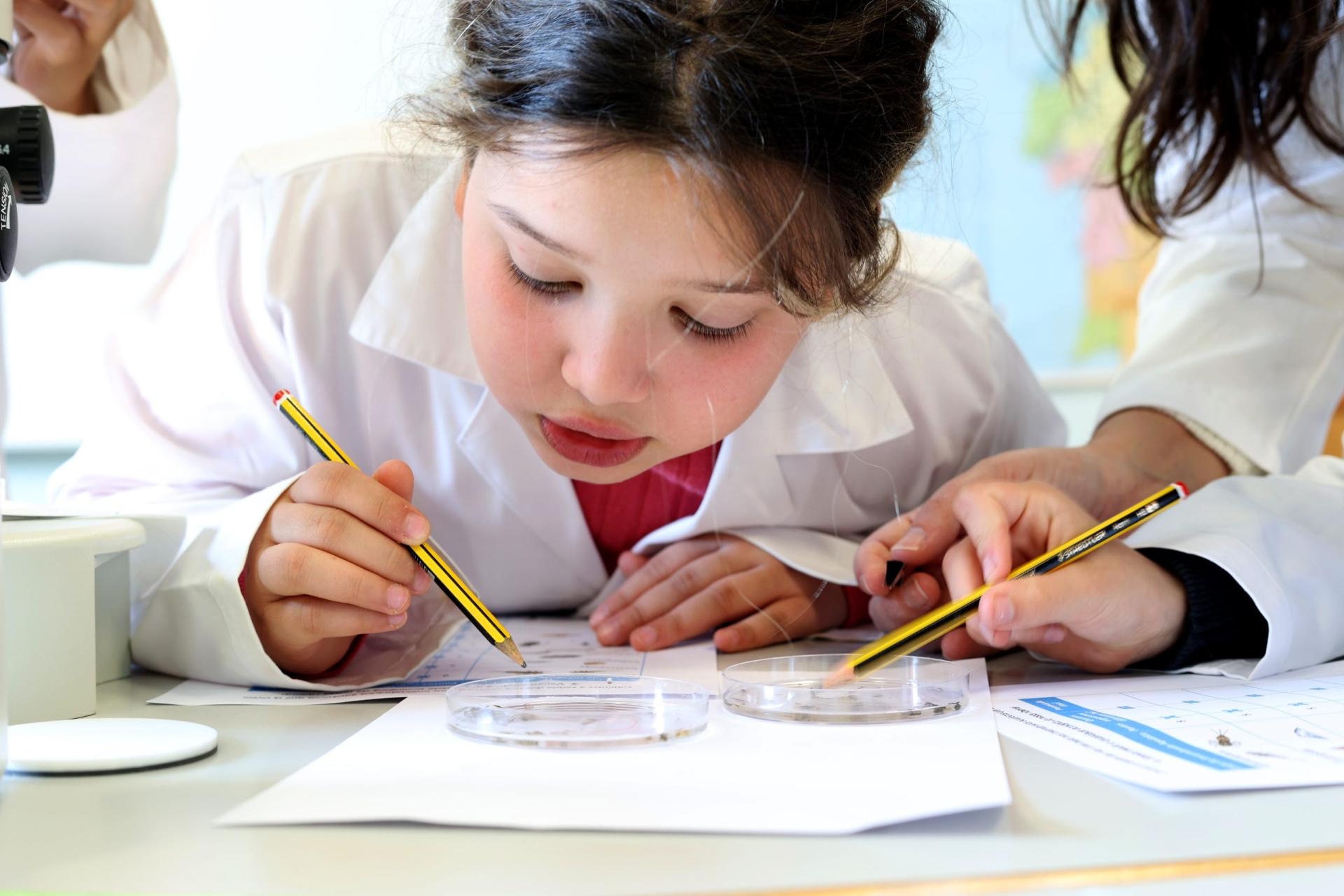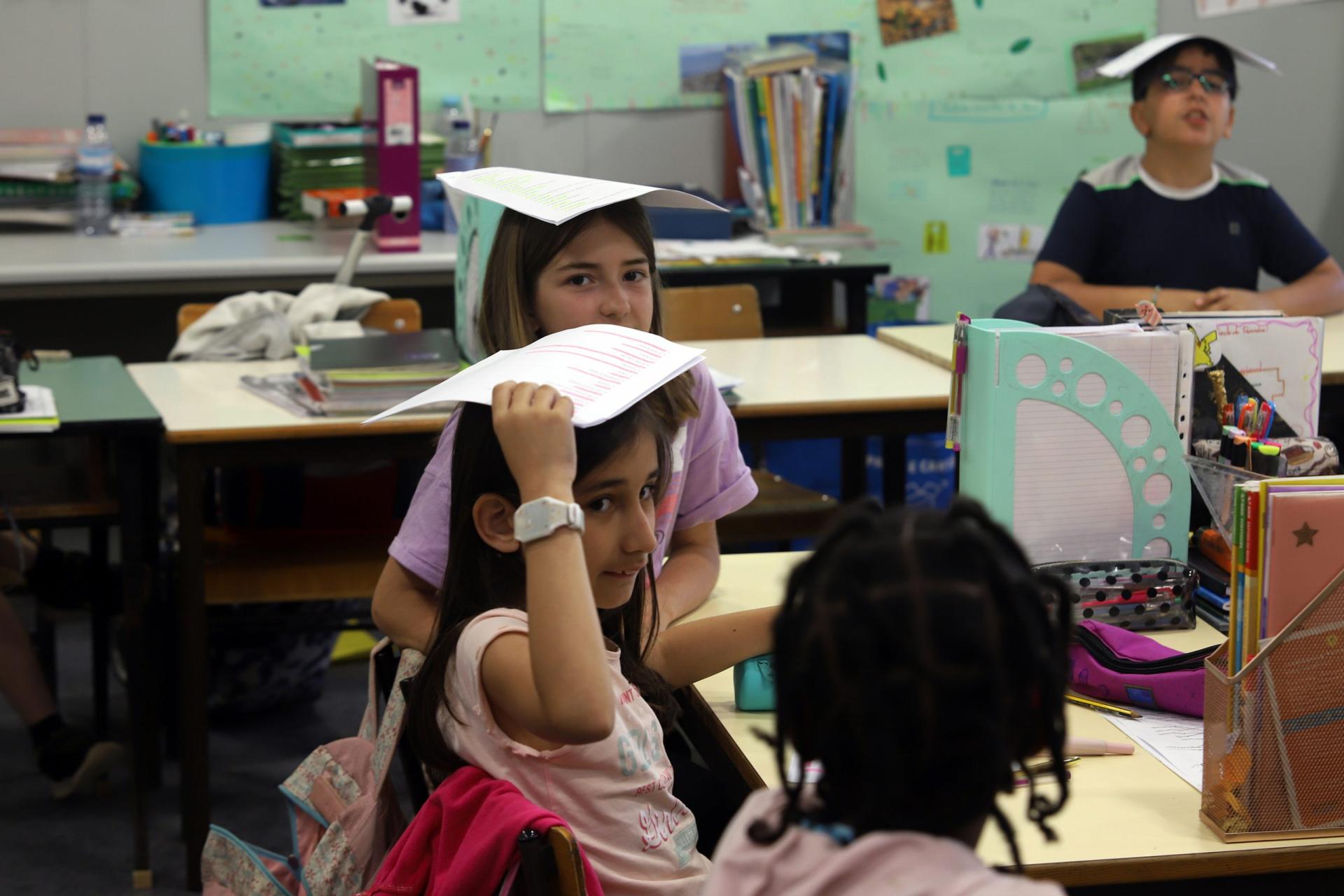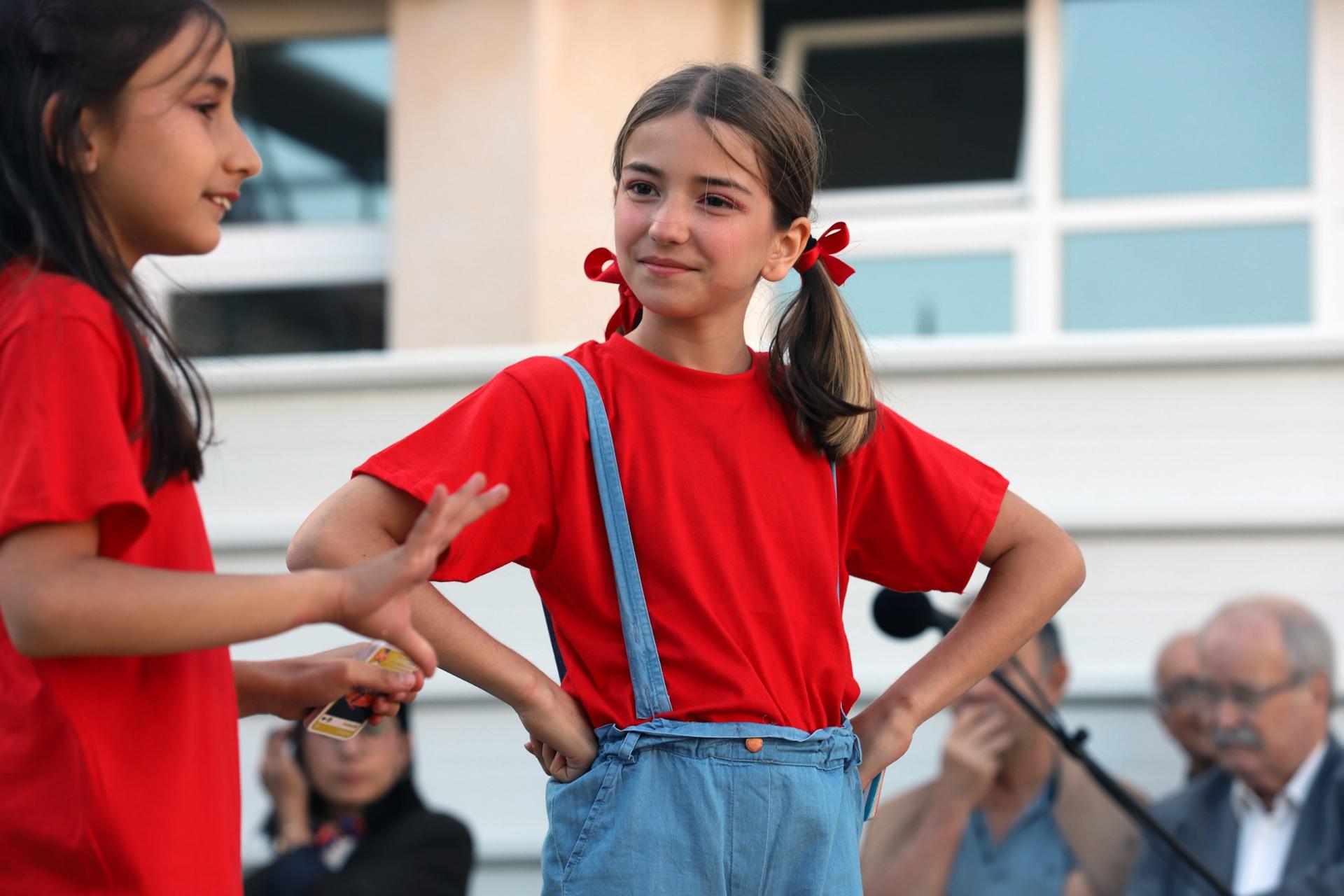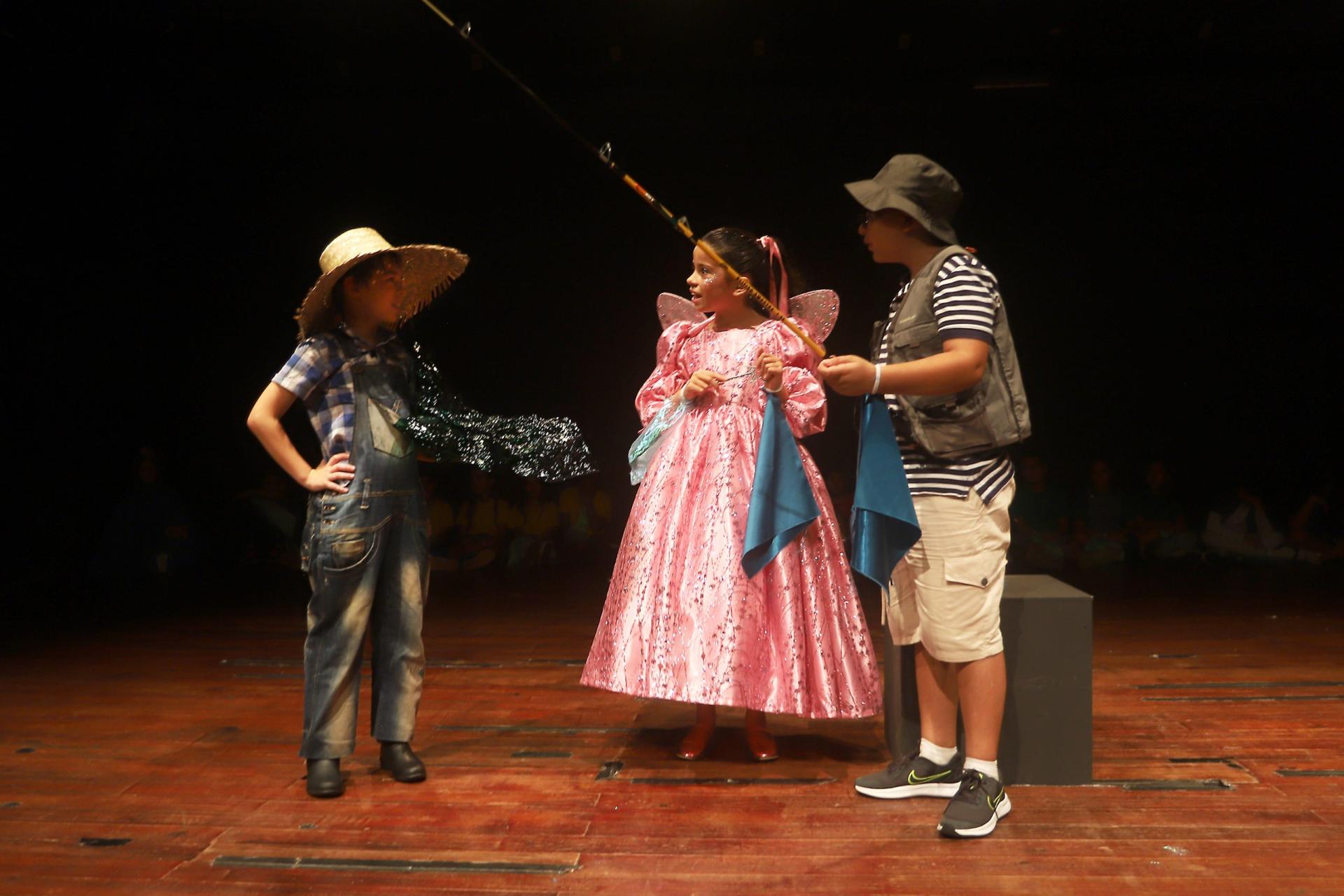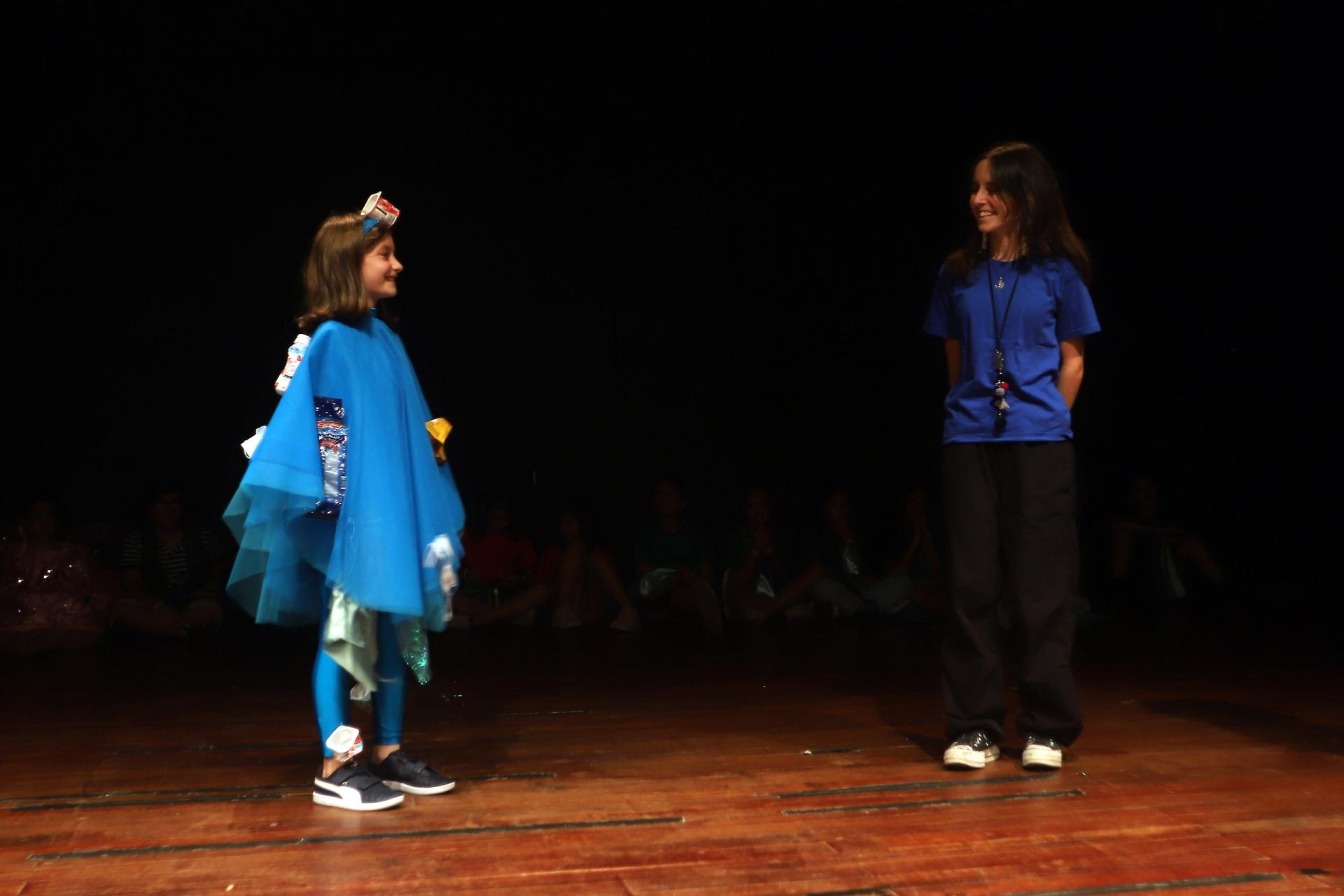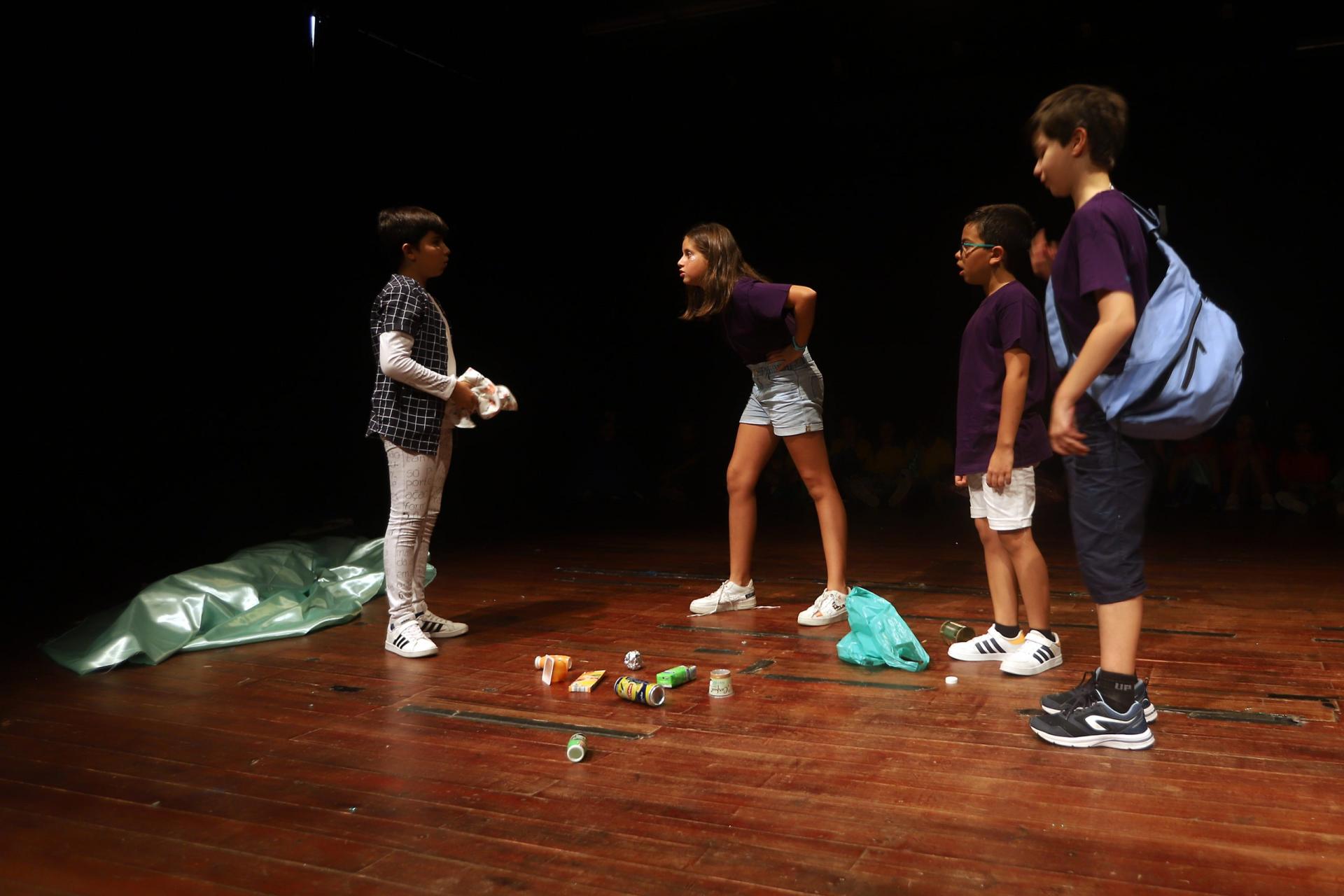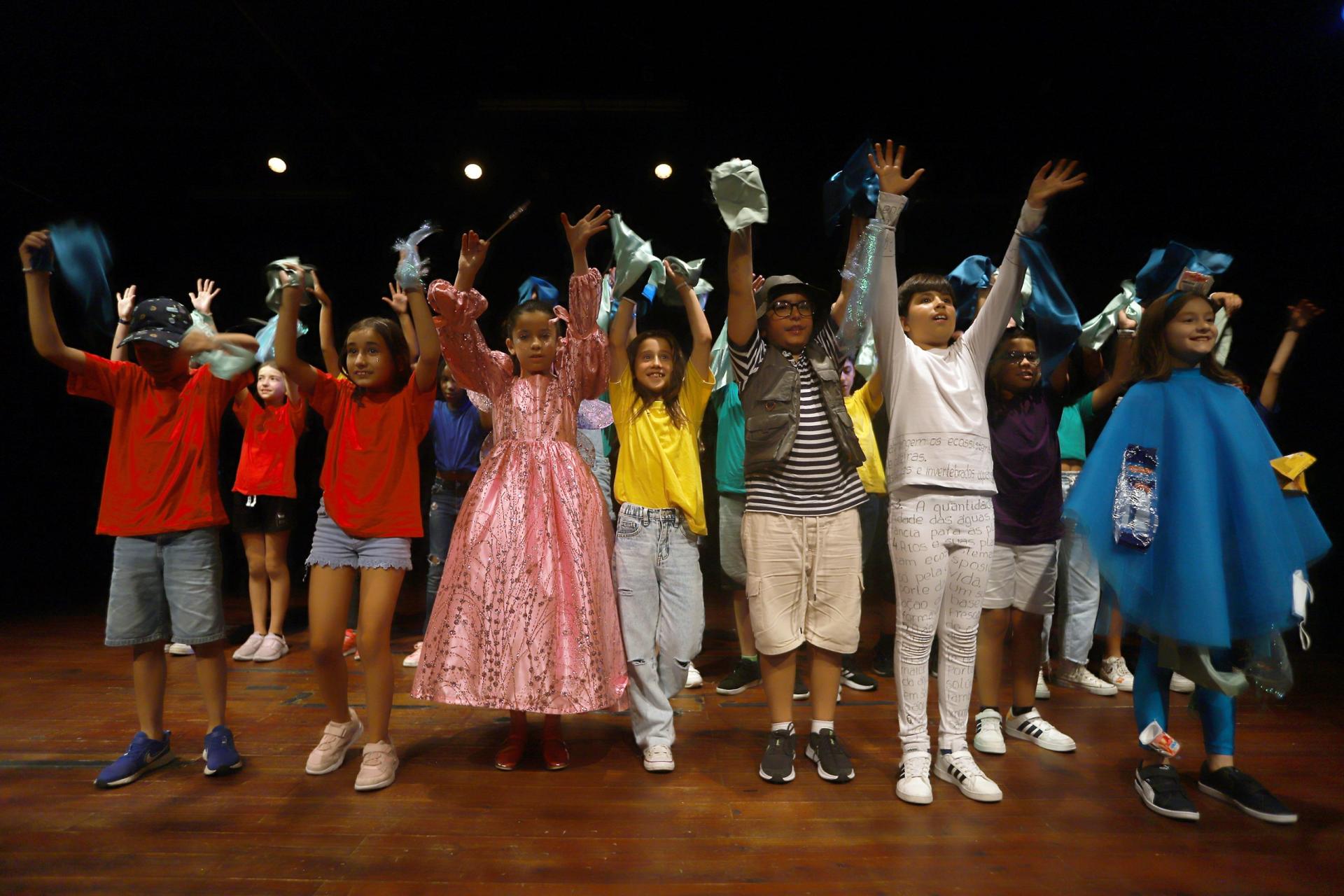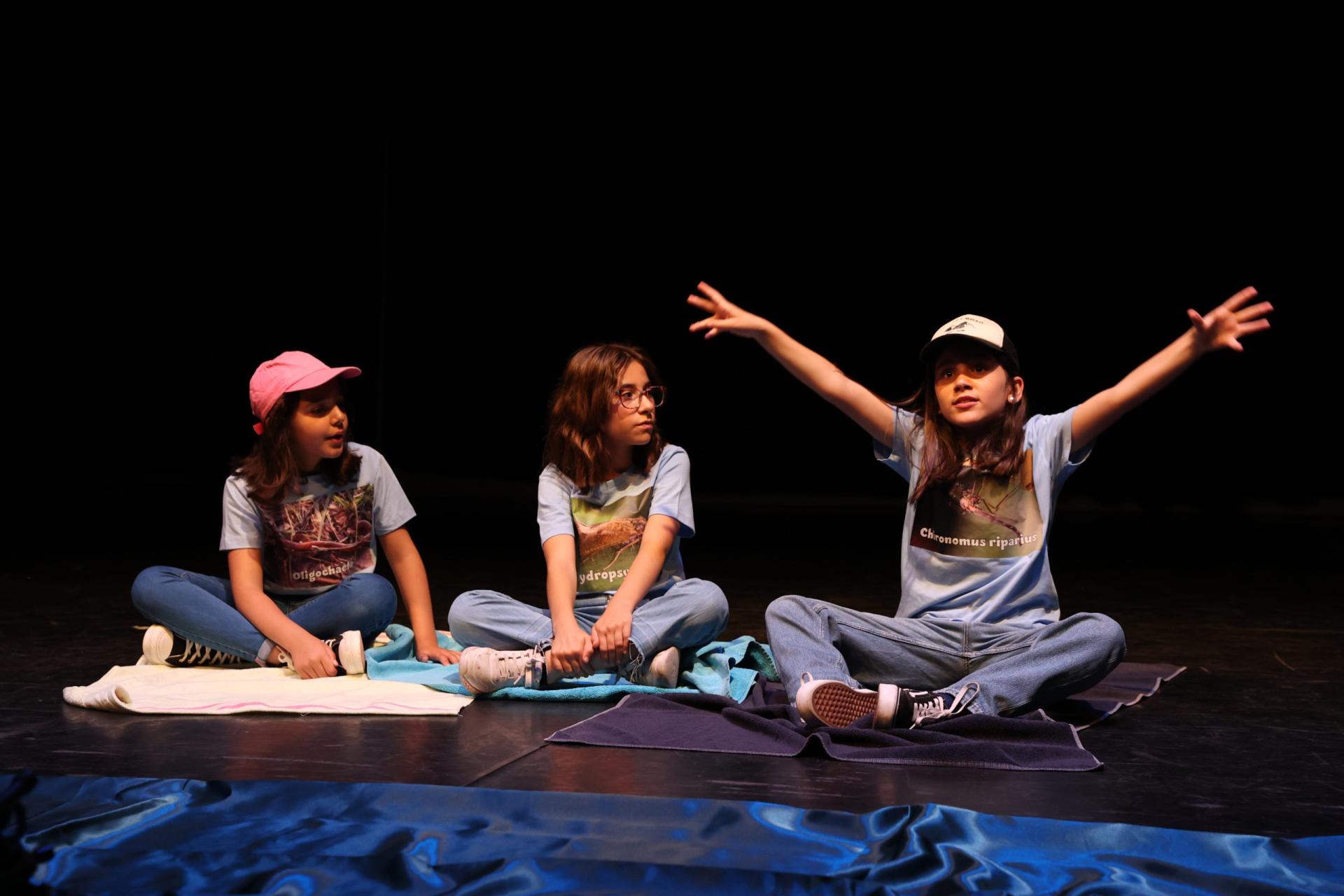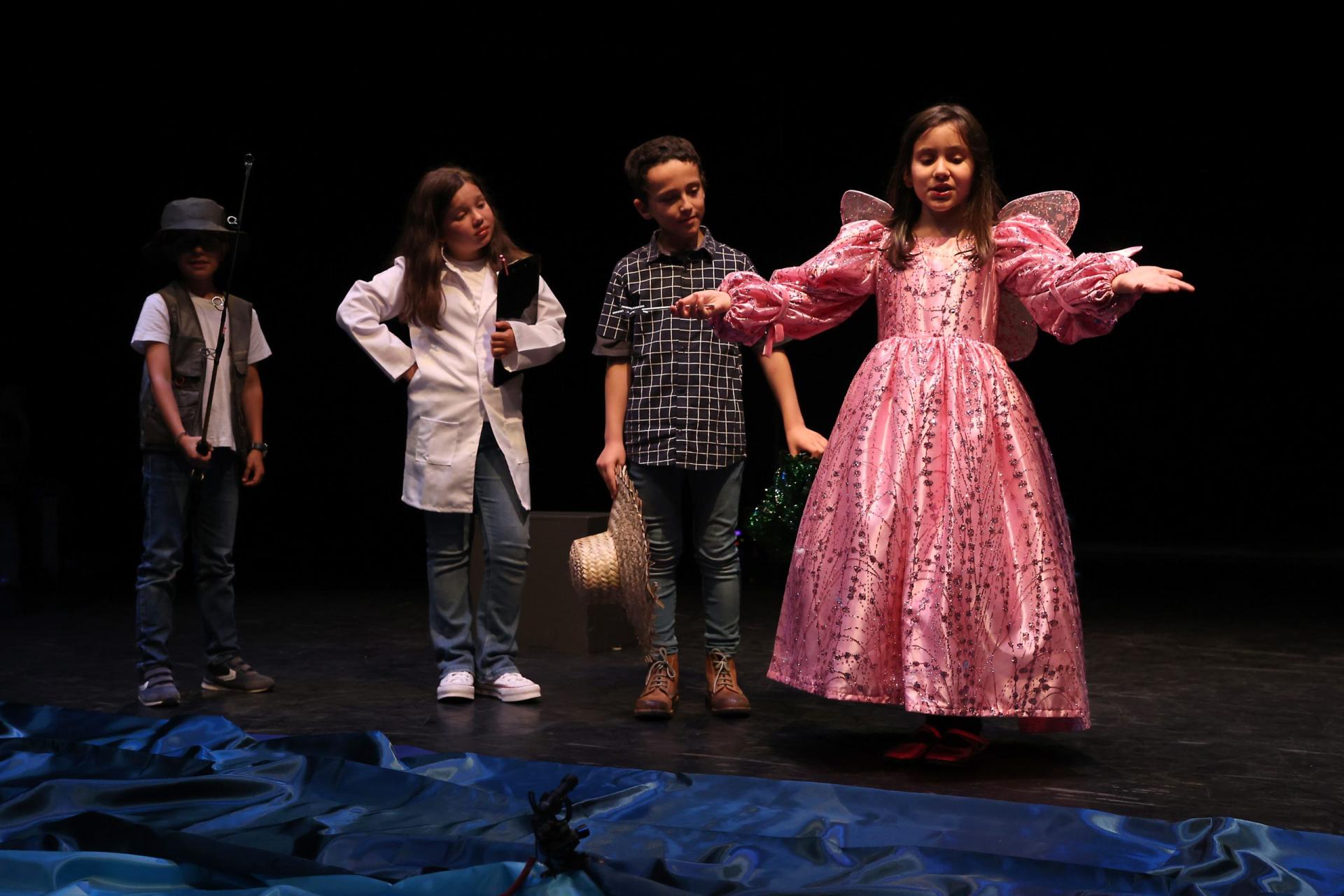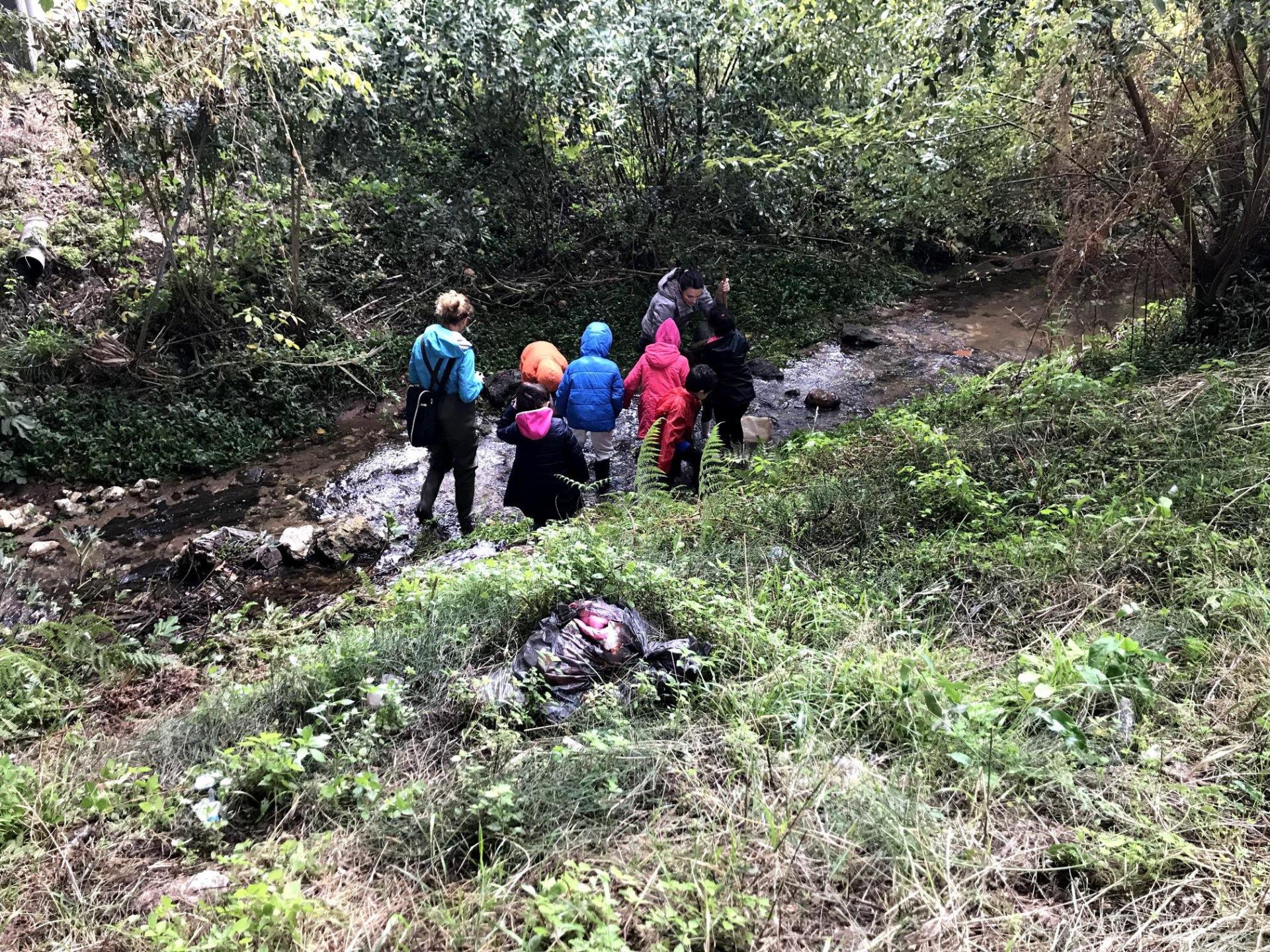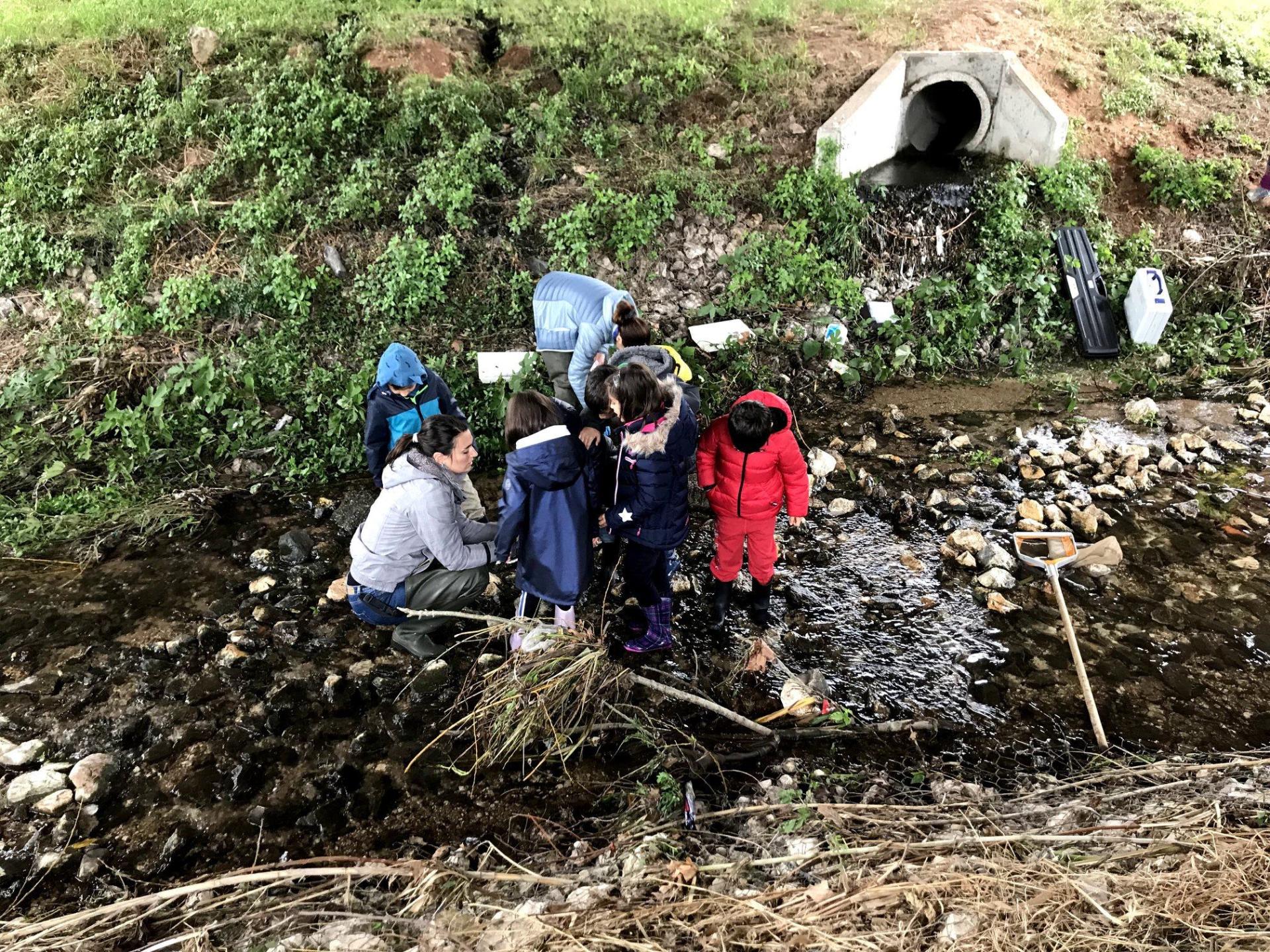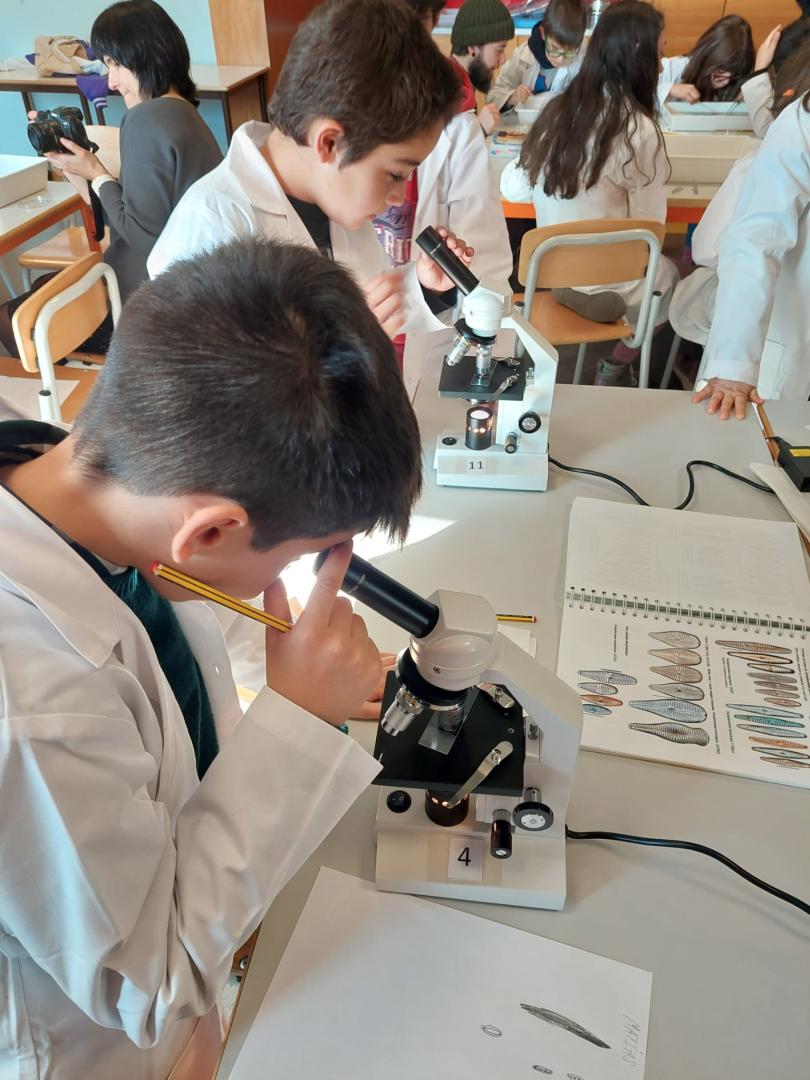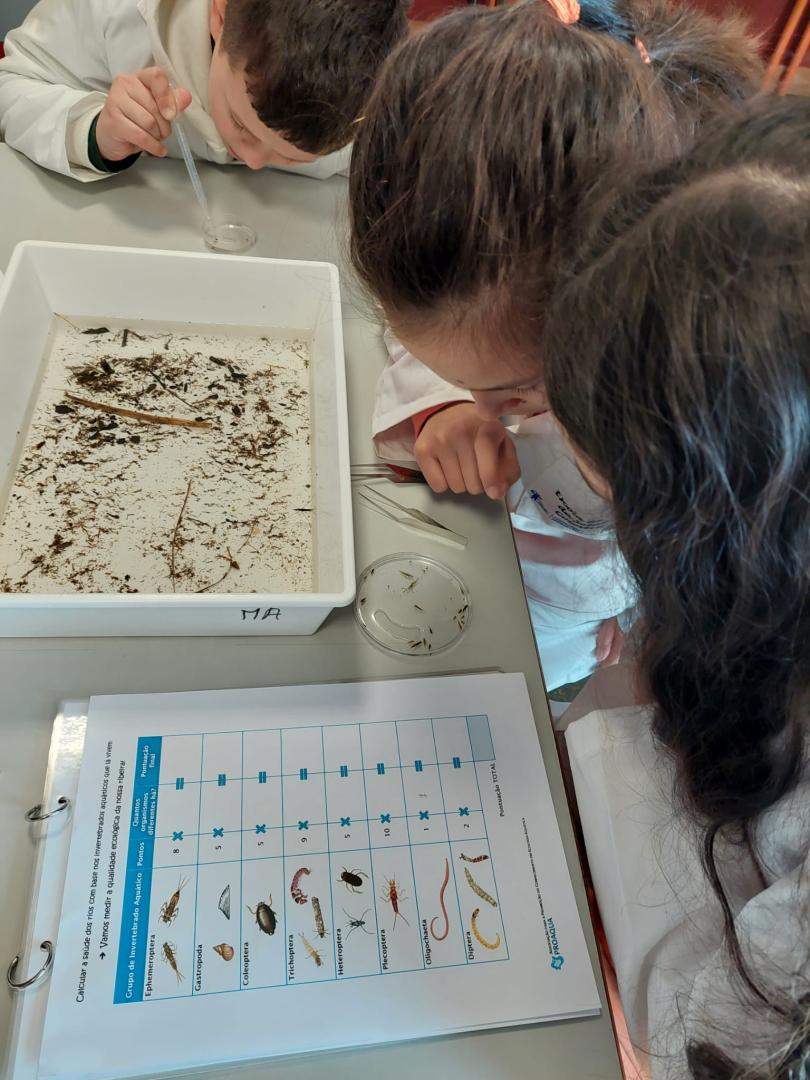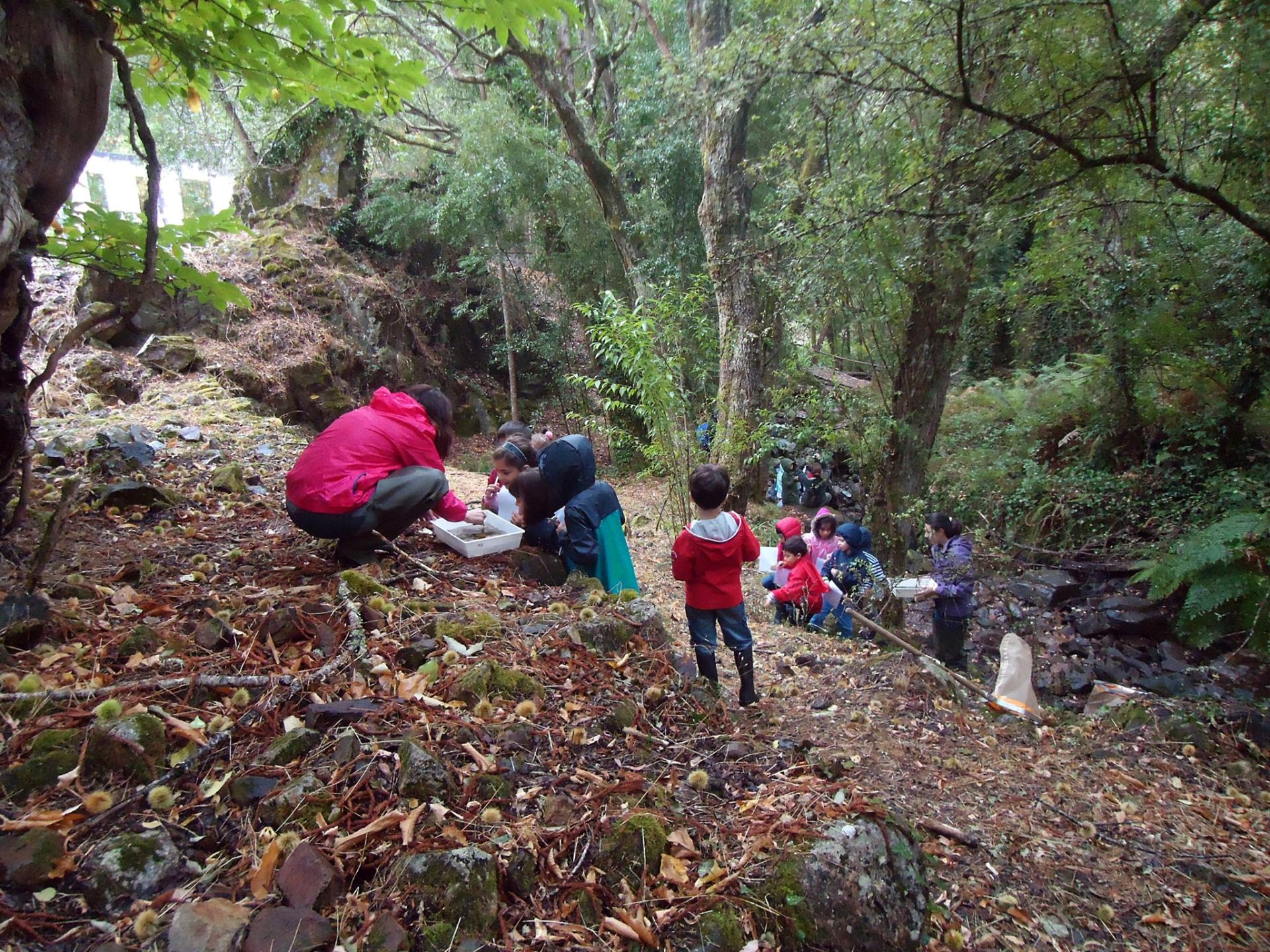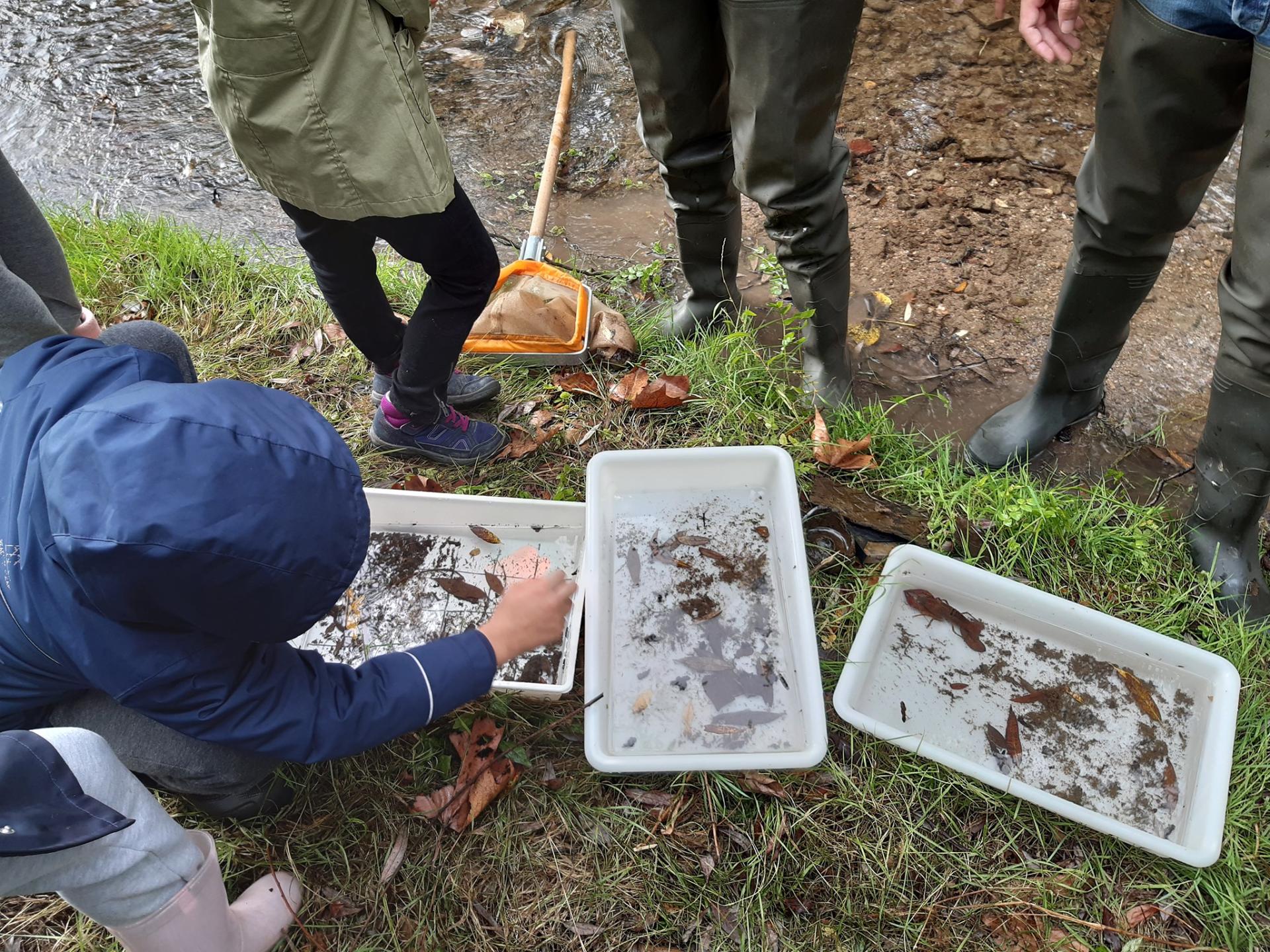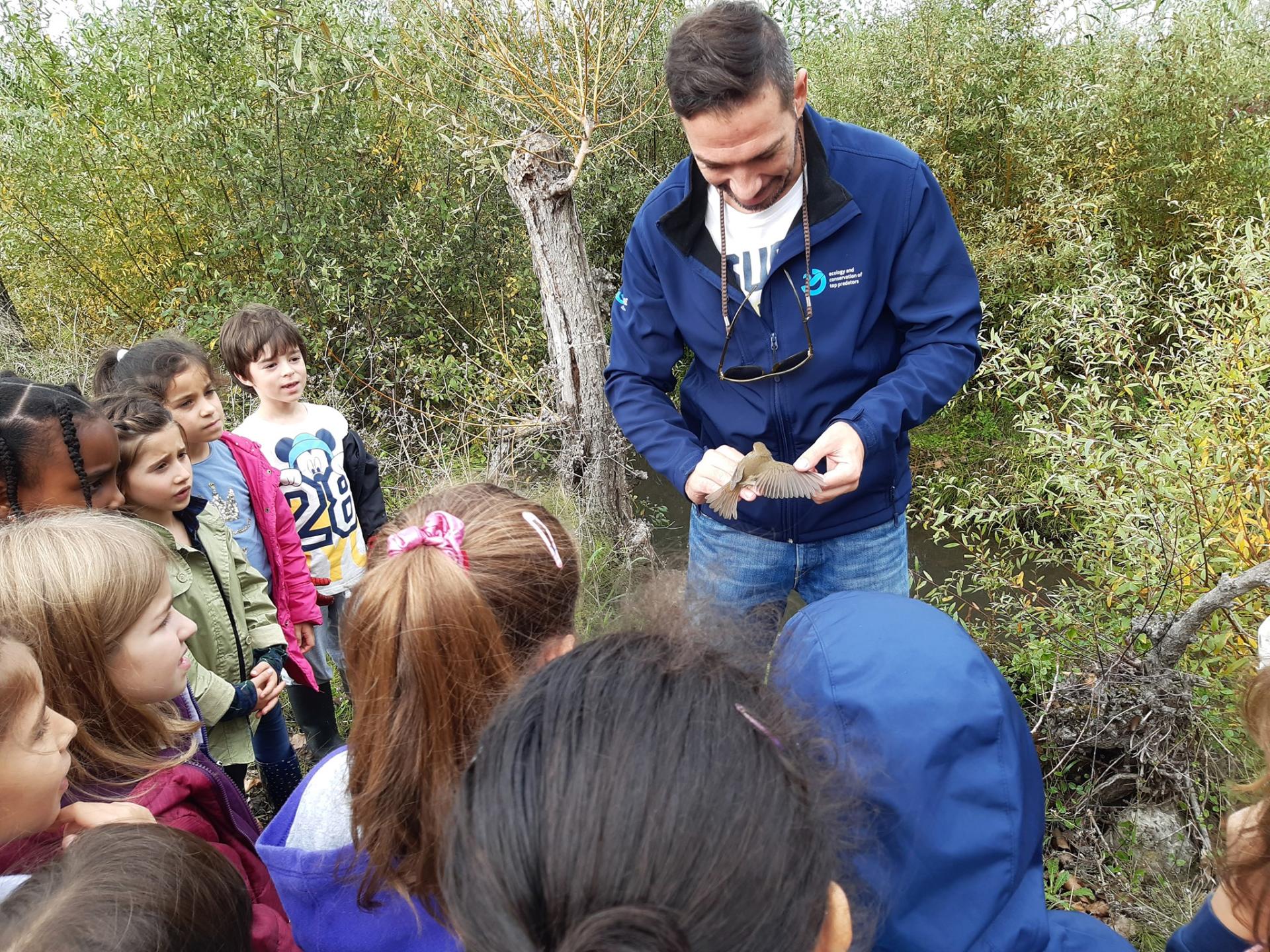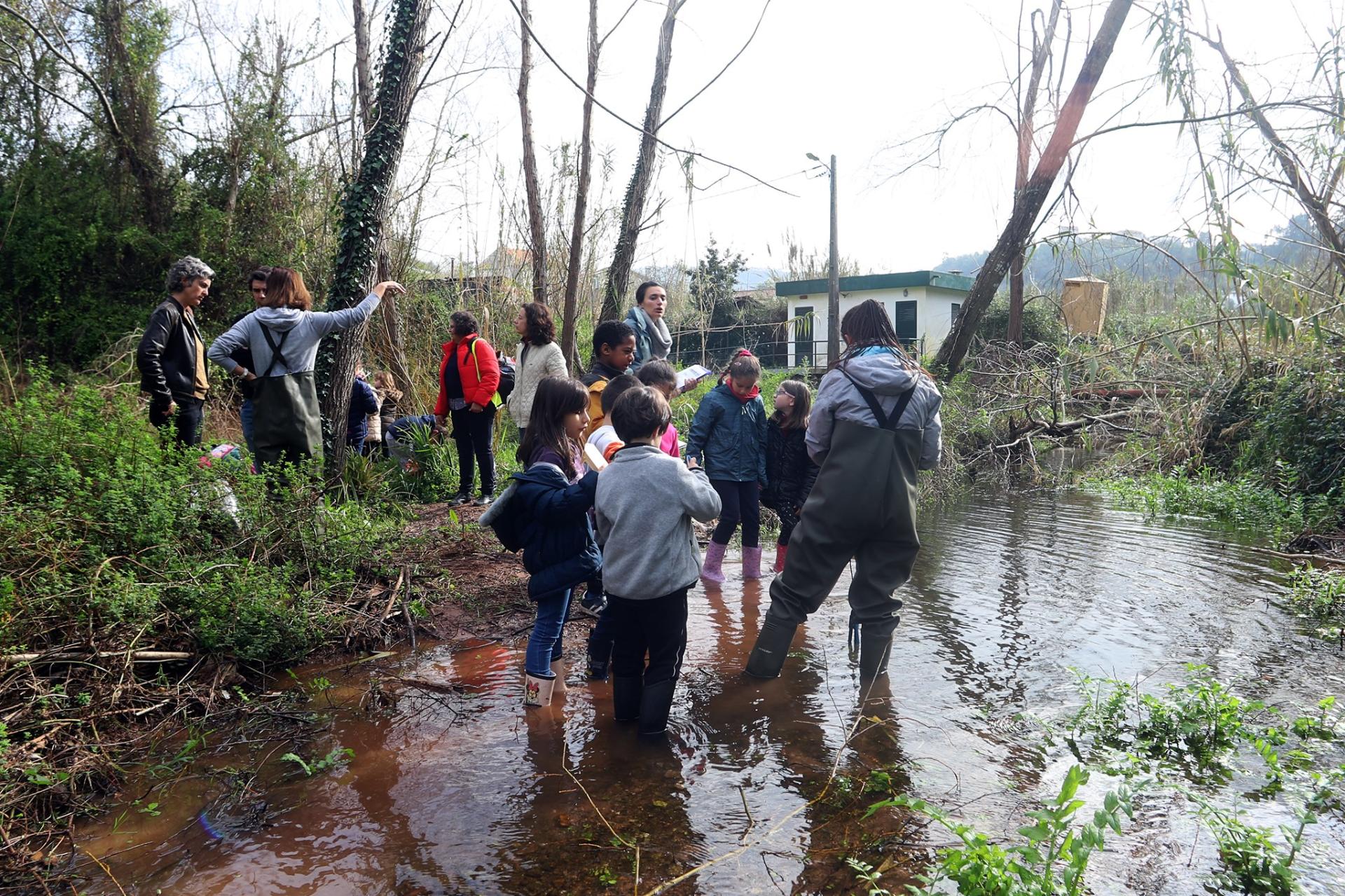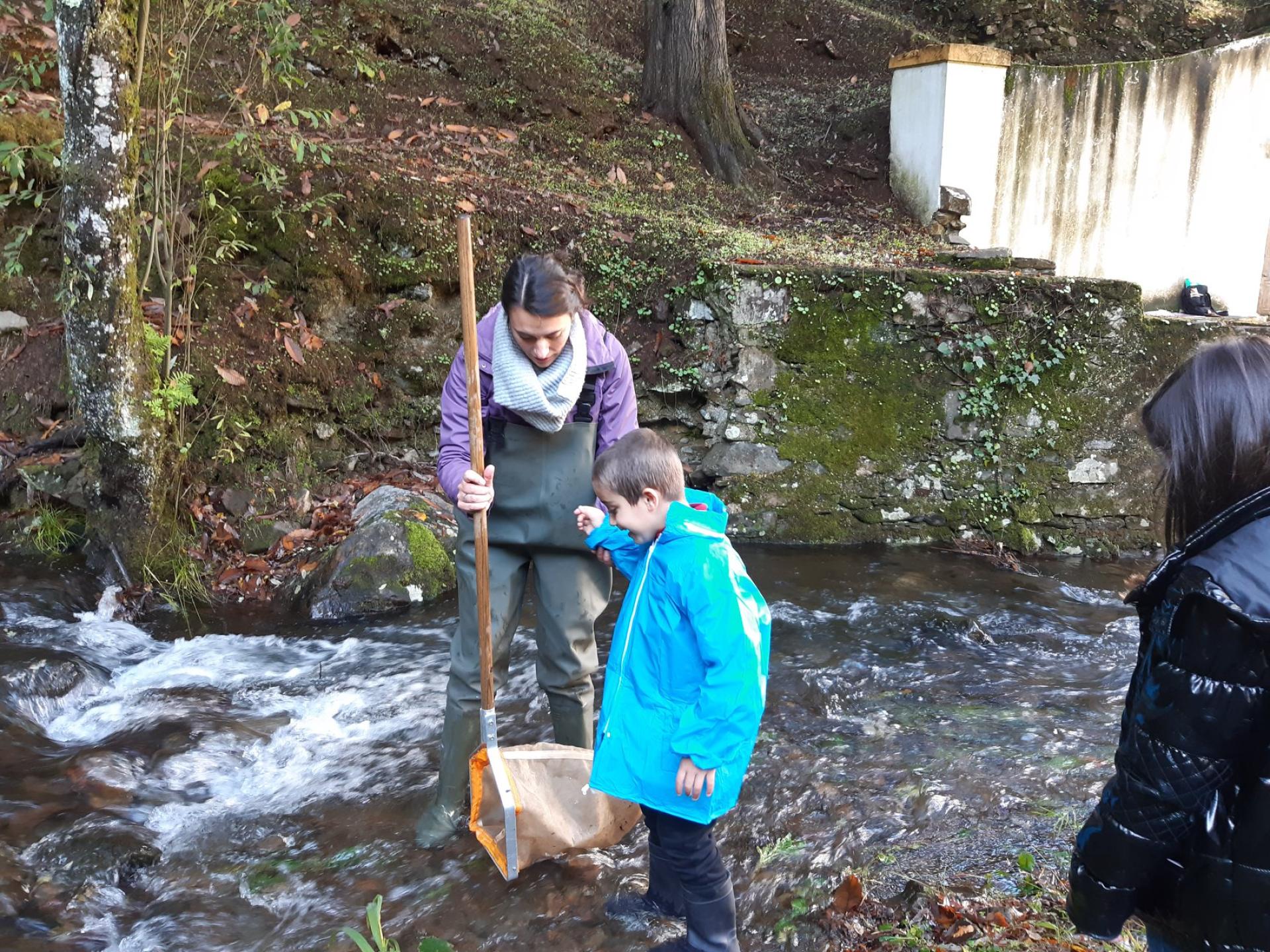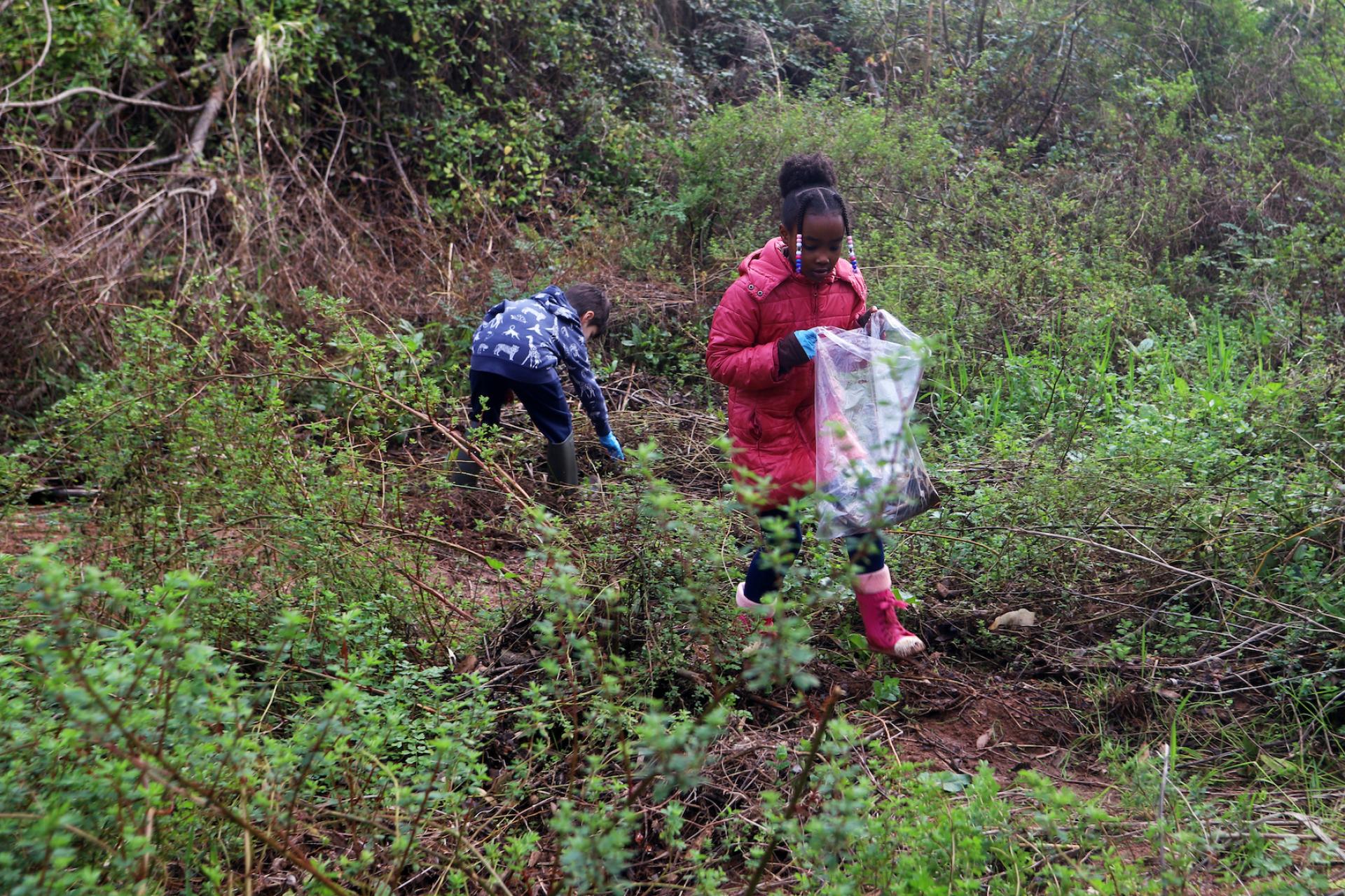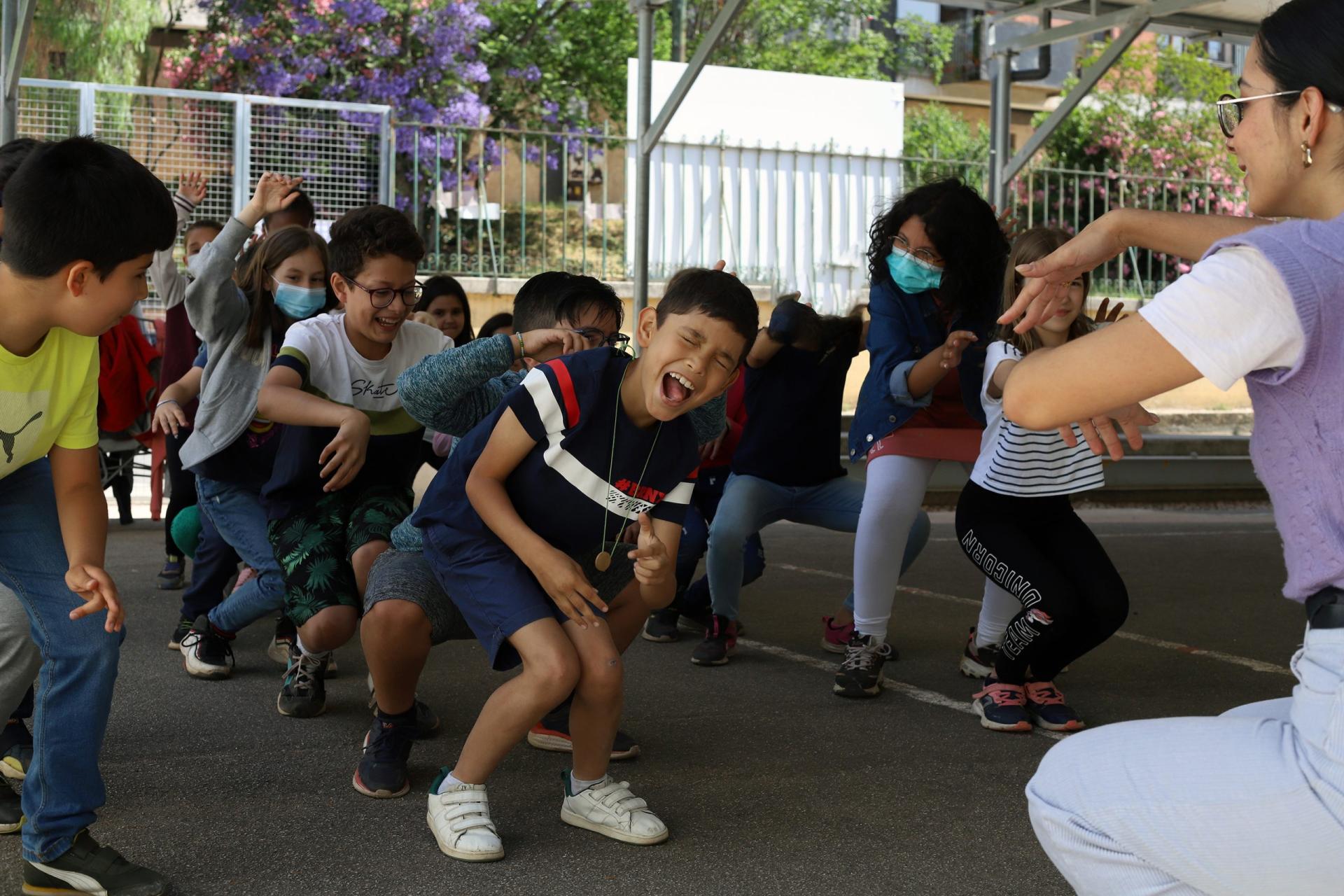CresceRio
Basic information
Project Title
CresceRio
Full project title
Growing up taking care of urban streams
Category
Reconnecting with nature
Project Description
With an emphasis on urban primary school students, CresceRio blends science and performing arts to: reestablish a connection between children and nature; foster their knowledge of freshwater ecosystems, and main stressors; and raise local community and policymakers' consciousness of the need to restore urban streams. Throughout 4 years of primary school, students conduct fieldwork and lab activities, and finally co-create a theater play about their experiences and perform it for the public.
Geographical Scope
Local
Project Region
Coimbra, Portugal, Portugal
Urban or rural issues
Mainly urban
Physical or other transformations
It refers to other types of transformations (soft investment)
EU Programme or fund
No
Description of the project
Summary
In Portugal most of the streams and rivers running through cities have been neglected, artificialized or covered. At the same time urban children are losing contact with nature, fearing the contact with earth, water or animals. Consequently, these future adults will not value nature and thus may not implement actions to protect and enhance the ecosystem's health. In view of this, CresceRio aimed to: reestablish the connection of children of cities with nature while fostering their knowledge of freshwater ecosystems, biodiversity and their main stressors; and raise awareness of local community and policymakers' to the need of restoring urban streams to promote a sustainable and inclusive future. At the same time, CresceRio promotes the contact of children with Science and Arts and participatory approaches to promote responsibility and sense of belonging. CresceRio's main target are children from primary schools (6-10 years), but also the enlarged school community (e.g., teachers, families). During the project, the students engaged in field trips with freshwater ecologists and laboratory classes. Over time they gained important knowledge and experiences. In the last school year, they discussed those experiences with the theatre company and co-created a script of a theatre play. In the end, the students presented the play to families and other public. While their knowledge grew, the fears of the children for nature decreased. They became able to discuss the degradation of the streams and identify the biodiversity using scientific terms. The project was particularly successful for children with some level of cognitive disabilities, which showed more interest than usual when learning in the school environment. The project`s impact was broadened with workshops in other schools and through news in local and national newspapers, social networks, scientific journals, communications in international congresses, and by the theatre play.
Key objectives for sustainability
CresceRio aims to promote sustainable cities by growing the love for nature in children and school communities, while at the same time fostering the health of urban freshwater ecosystems as nature-based solutions. Healthy urban streams and rivers bring, through their biodiversity and processes, important ecosystem services for citizens: removal of air pollutants, reducing greenhouse effect; climate regulation by the vegetation and water; removal of excessive nutrients, heavy metals, and other water pollutants by aquatic plants and invertebrates. Streams can also be used for leisure and relaxation, improving the physical health and wellbeing of citizens and contributing to cities aesthetics. However, these services are often not acknowledged by the citizens, as neither are the species inhabiting these ecosystems.
CresceRio participants visited different streams of the city close to schools, assessed the vegetation in the margins and sampled aquatic invertebrates, microalgae and birds with specialists, learning their names and functions in the ecosystem. In the laboratory they experimented taxonomic identification with microscopes, discovering the smaller species. In each stream they followed questionnaires that guided a critical analysis of the ecosystem integrity and main stressors (e.g., artificial walls, channelization, cuts of riparian vegetation, invasive species, garbage, bad smell). The students also discussed solutions for the problems detected and cleaned the garbage found at the streams. During the process of co-creation of the theatre play, children cemented the new concepts. Our results showed that they developed love for nature, lost their fears for natural elements and became able to name biodiversity elements of stream ecosystems (Feio et al. 2022). Through the dissemination of their activities, we reached the attention of the city municipality, which visited the streams with the students, and a rehabilitation project of an urban stream was started.
CresceRio participants visited different streams of the city close to schools, assessed the vegetation in the margins and sampled aquatic invertebrates, microalgae and birds with specialists, learning their names and functions in the ecosystem. In the laboratory they experimented taxonomic identification with microscopes, discovering the smaller species. In each stream they followed questionnaires that guided a critical analysis of the ecosystem integrity and main stressors (e.g., artificial walls, channelization, cuts of riparian vegetation, invasive species, garbage, bad smell). The students also discussed solutions for the problems detected and cleaned the garbage found at the streams. During the process of co-creation of the theatre play, children cemented the new concepts. Our results showed that they developed love for nature, lost their fears for natural elements and became able to name biodiversity elements of stream ecosystems (Feio et al. 2022). Through the dissemination of their activities, we reached the attention of the city municipality, which visited the streams with the students, and a rehabilitation project of an urban stream was started.
Key objectives for aesthetics and quality
CresceRio project has provided the participants with new and unforgettable experiences, as it was expressed in the words they wrote in small papers contained in a memory gift bottle that they gave to the team at the end of the project: “With this project we improve the world! I loved CresceRio”, “The project CresceRio taught us how to take care of streams. The project was magic!”, or “I learned a lot in these last years, to respect the rivers and animals”, or just “I loved being with you”! .
All the experiences together allowed them to experiment something that is not part of a normal academic curriculum in primary school (or ever) in Portugal: the regular contact with natural areas, putting their feet in the water, using real scientific equipment, becoming actors for a real public.
In addition, parents were also able to participate in the project through a field trip for parents and children, by watching their children in the theatre play, and also by filling questionnaires at several moments. All under the umbrella topic of learning about the importance of urban stream ecosystems. In result, the students and their families as well as teachers and school assistants developed the feeling of being part of something special and unique. They also became aware that urban streams exist near their homes or work, in the middle of the city, and that they can contribute to their preservation. In the questionnaires made to the audience after the theatre play, many parents said: “That the rivers should be preserved and that there are trees and other vegetation that should be part of the rivers to keep ecological balance” and “that it is possible to treat this subject in such an engaging way to young people”.
All the experiences together allowed them to experiment something that is not part of a normal academic curriculum in primary school (or ever) in Portugal: the regular contact with natural areas, putting their feet in the water, using real scientific equipment, becoming actors for a real public.
In addition, parents were also able to participate in the project through a field trip for parents and children, by watching their children in the theatre play, and also by filling questionnaires at several moments. All under the umbrella topic of learning about the importance of urban stream ecosystems. In result, the students and their families as well as teachers and school assistants developed the feeling of being part of something special and unique. They also became aware that urban streams exist near their homes or work, in the middle of the city, and that they can contribute to their preservation. In the questionnaires made to the audience after the theatre play, many parents said: “That the rivers should be preserved and that there are trees and other vegetation that should be part of the rivers to keep ecological balance” and “that it is possible to treat this subject in such an engaging way to young people”.
Key objectives for inclusion
CresceRio project was implemented in public schools that receive students from all socio-economic levels, and parents had also different levels of instruction, from basic school to PhD. As public school is free, so was the project for all participants. The costs of activities were fully supported by own funds of the entities involved, each bringing their own personnel, equipment and materials (e.g., sampling devices, field meters, or light and sound equipment used in the theatre play). The partnership with the group of schools Eugénio de Castro facilitated all the procedures. The activities were integrated in the beginning of each year in the programmatic contents. All necessary authorizations were requested to the tutors through the teachers. The transportation to the field and last theatre rehearsals (the remaining were done at school), was done in school buses at a lower cost, mostly by using part of the available budget provided by the municipality to children for annual excursions. By working with urban streams the costs with transportations were reduced to a minimum. In addition, the laboratories were recreated in the school environment, in regular classrooms, by using equipment (e.g., microscopes and stereomicroscopes) existing in the schools (sometimes never used before) and complementing then, whenever necessary, with equipment requested to other schools for the activities or equipment brought from the research labs of MARE and Dept. of Biology of the University of Aveiro. All these needs were assessed and discussed beforehand with the teachers involved.
Finally, all the students from classes participated in the project activities, including those with cognitive disabilities and foreign students (as a student from Bielorrusia) with all the necessary adaptations. The theatre play was simultaneously translated to gestual language. The activities were safe for young children as the streams had low water levels and safe and easy accesses were chosen.
Finally, all the students from classes participated in the project activities, including those with cognitive disabilities and foreign students (as a student from Bielorrusia) with all the necessary adaptations. The theatre play was simultaneously translated to gestual language. The activities were safe for young children as the streams had low water levels and safe and easy accesses were chosen.
Results in relation to category
Crescerio enrolled two classes (45 children) from 2 primary schools of Coimbra from 2018 to 2023. It promoted 10 field trips with the children, 1 involving the parents and 2 involving municipality staff and the Civil Protection, 2 laboratory classes, 5 workshops at other schools for ca. 750 students. Two participatory theatre scripts were elaborated, and 5 presentations of the plays were performed by the 45 children. The first play “Histórias do Rio”, was presented in 2022 in 3 sessions to ca. 480 people; and the second, “As Vidas do Rio”, in 2023 in 2 sessions for ca. 200 people.
The project provided scientific base knowledge on urban stream ecosystems to children but also indirectly to adults, through the stories told about their experiences; and directly through the activities performed involving the adults; it delivered science learning in various contexts: outdoors, in the field (rivers), in the laboratory, in the classroom and on stage (through theatre).
Four didactic materials were produced: identification guides for fauna and flora, a field sampling guide for invertebrates and microalgae, and a field questionnaire to assess stream integrity, a form to register invertebrates and calculate an index.
The results of CresceRio were published in an international journal and a book chapter: Feio et al. 2023, PlosOne and Feio, Ranta and Odume 2021, Springer.
And 3 oral communications were done in international congresses: 2nd Meeting of the Iberian Ecological Society (SIBECOL), Aveiro Portugal; 13th European Conference on Ecological Restoration, Alicante, Spain; and Theater About Science 2023 conference, Coimbra, Portugal.
The project was also presented in other events: the Meet.eco 2022, 2023 (University of Coimbra); European Researchers night, Coimbra 2023; in the exhibition EDURRIO in the cities of Coimbra, Évora and Figueira da Foz, in 2023.
At least 45 news stories were published in local and national newspapers and in a national TV channel.
The project provided scientific base knowledge on urban stream ecosystems to children but also indirectly to adults, through the stories told about their experiences; and directly through the activities performed involving the adults; it delivered science learning in various contexts: outdoors, in the field (rivers), in the laboratory, in the classroom and on stage (through theatre).
Four didactic materials were produced: identification guides for fauna and flora, a field sampling guide for invertebrates and microalgae, and a field questionnaire to assess stream integrity, a form to register invertebrates and calculate an index.
The results of CresceRio were published in an international journal and a book chapter: Feio et al. 2023, PlosOne and Feio, Ranta and Odume 2021, Springer.
And 3 oral communications were done in international congresses: 2nd Meeting of the Iberian Ecological Society (SIBECOL), Aveiro Portugal; 13th European Conference on Ecological Restoration, Alicante, Spain; and Theater About Science 2023 conference, Coimbra, Portugal.
The project was also presented in other events: the Meet.eco 2022, 2023 (University of Coimbra); European Researchers night, Coimbra 2023; in the exhibition EDURRIO in the cities of Coimbra, Évora and Figueira da Foz, in 2023.
At least 45 news stories were published in local and national newspapers and in a national TV channel.
How Citizens benefit
By concept, CresceRio is a participatory project that involves primary school students, which are mainly children from 6-10 years old. Children contributed with solutions for degraded streams and were involved in the co-creation of the theatre play script with the aim of giving their voices and perspectives to the characters. A “fairy” that transformed the degraded urban stream into a functional ecosystem was one of their ideas.
The project also involved the families that participated in a field trip and attended the theatre play. The students had also the mission to “tell everyone about what they learned. The parents also became agents of dissemination. A mother working for a newspaper promoted regular publications on the project activities, or parents shared the posts and news about the project with their friends and families. Others started taking walks to the streams near their homes on weekends, looking at the animals and plants with the help of their children, and even asking the help of researchers to teach them how to act upon some issues they discovered in streams.
For the teachers, present at every step of the project, the experience was empowering, as they gained new tools and knowledge to work with future classes in a more original and innovative way, and are now aware of new scientific and artistic contents with a detail difficult to acquire by only following school manuals. In addition, they are now confident to use equipment, such as microscopes, that they never used before, even if it was available in schools for years.
The research teams also learned from the feedback of the children to the activities. In addition to hearing the childrens’ comments and questions, they implemented a structured analysis of their evolution through a series of inquiries that students filled in before and after the activities and interviews. The answers allowed us to adjust some activities and focus on aspects that were not so clearly uptaken by children.
The project also involved the families that participated in a field trip and attended the theatre play. The students had also the mission to “tell everyone about what they learned. The parents also became agents of dissemination. A mother working for a newspaper promoted regular publications on the project activities, or parents shared the posts and news about the project with their friends and families. Others started taking walks to the streams near their homes on weekends, looking at the animals and plants with the help of their children, and even asking the help of researchers to teach them how to act upon some issues they discovered in streams.
For the teachers, present at every step of the project, the experience was empowering, as they gained new tools and knowledge to work with future classes in a more original and innovative way, and are now aware of new scientific and artistic contents with a detail difficult to acquire by only following school manuals. In addition, they are now confident to use equipment, such as microscopes, that they never used before, even if it was available in schools for years.
The research teams also learned from the feedback of the children to the activities. In addition to hearing the childrens’ comments and questions, they implemented a structured analysis of their evolution through a series of inquiries that students filled in before and after the activities and interviews. The answers allowed us to adjust some activities and focus on aspects that were not so clearly uptaken by children.
Physical or other transformations
It refers to other types of transformations (soft investment)
Innovative character
CresceRio innovates through three main aspects (besides other more specific actions):
1) its long duration. The project runs with the same children over 4 years. This allows for a continuity, in opposition to occasional science dissemination activities, that are the common practice. This allowed also for the evolution of activities, from simpler to more complex, the gaining of trust between students and the whole school community and the research and artistic teams; the adjustment and correction of eventual flaws; and an effective uptake of the project messages.
2) the real interaction between arts (in this case theatre) and science for a common purpose. Even during the first years of the project, when activities were mainly scientific, elements of the theatre company were always present, observing and learning too, and recording the process in photographs and videos, and participating in the project communication. For children, they had the opportunity to participate in activities of disciplines typically apart – science and arts/theatre. Not only were they able to experiment both, but they also actually observed the great potential for integrating one into the other. The plays they performed (titled “Histórias do Rio/ River Stories” and “As Vidas do Rio” / Lives in the River,” are two great examples of Science Theatre, an interdisciplinary practice that has been gaining followers all over the world as an innovative and effective way of communicating science.
3) the introduction of very practical activities in the curriculum focused on an object of study (here the urban streams), as well as giving the perspective of public intervention to the students, when trying to influence decision makers.
1) its long duration. The project runs with the same children over 4 years. This allows for a continuity, in opposition to occasional science dissemination activities, that are the common practice. This allowed also for the evolution of activities, from simpler to more complex, the gaining of trust between students and the whole school community and the research and artistic teams; the adjustment and correction of eventual flaws; and an effective uptake of the project messages.
2) the real interaction between arts (in this case theatre) and science for a common purpose. Even during the first years of the project, when activities were mainly scientific, elements of the theatre company were always present, observing and learning too, and recording the process in photographs and videos, and participating in the project communication. For children, they had the opportunity to participate in activities of disciplines typically apart – science and arts/theatre. Not only were they able to experiment both, but they also actually observed the great potential for integrating one into the other. The plays they performed (titled “Histórias do Rio/ River Stories” and “As Vidas do Rio” / Lives in the River,” are two great examples of Science Theatre, an interdisciplinary practice that has been gaining followers all over the world as an innovative and effective way of communicating science.
3) the introduction of very practical activities in the curriculum focused on an object of study (here the urban streams), as well as giving the perspective of public intervention to the students, when trying to influence decision makers.
Disciplines/knowledge reflected
The main disciplines involved in the CresceRio project were education, ecology, theatre, sociology and communication. The project was planned by MARE and partners, aiming for a full integration of all disciplines from its beginning.
CresceRio was introduced to the teachers and to the board of schools during summer breaks, and in the beginning of the year it was integrated in the annual plan of activities and in the curriculum of disciplines (e.g., Environmental studies, Citizenship). Then it was presented in a meeting to the parents/tutors of the students, and the necessary authorizations were requested (e.g., for their participation, recollection of images including for the social communication, participation in field trips).
At the same time, inquiries were designed by a sociologist, to be answered by students and by the families (different inquiries adjusted to the targets), to allow a follow-up of the project impact on children and eventual adjustments. The first inquiries were filled before the first field trip and the others after each activity. At a later stage there were also group interviews done by the sociologist to all students and interviews to the theatre audience.
Then, field trips began with the students and teachers and the ecologists’ teams. But the sociologist and the Marionet theatre company went to all activities, registering the whole process in photos and videos that were used for the project dissemination. This was essential for the full comprehension of all partners of the topic explored in the project.
At a later stage, during the 4th year of primary school, the students shared with the Marionet team their experiences in the project and perspectives about urban stream ecosystems. Then started a collaborative process of elaboration of the theatre plays, which were revised by the MARE team to assure the scientific rigor. The Marionet team was then responsible for producing the theatre plays that were represented by students.
CresceRio was introduced to the teachers and to the board of schools during summer breaks, and in the beginning of the year it was integrated in the annual plan of activities and in the curriculum of disciplines (e.g., Environmental studies, Citizenship). Then it was presented in a meeting to the parents/tutors of the students, and the necessary authorizations were requested (e.g., for their participation, recollection of images including for the social communication, participation in field trips).
At the same time, inquiries were designed by a sociologist, to be answered by students and by the families (different inquiries adjusted to the targets), to allow a follow-up of the project impact on children and eventual adjustments. The first inquiries were filled before the first field trip and the others after each activity. At a later stage there were also group interviews done by the sociologist to all students and interviews to the theatre audience.
Then, field trips began with the students and teachers and the ecologists’ teams. But the sociologist and the Marionet theatre company went to all activities, registering the whole process in photos and videos that were used for the project dissemination. This was essential for the full comprehension of all partners of the topic explored in the project.
At a later stage, during the 4th year of primary school, the students shared with the Marionet team their experiences in the project and perspectives about urban stream ecosystems. Then started a collaborative process of elaboration of the theatre plays, which were revised by the MARE team to assure the scientific rigor. The Marionet team was then responsible for producing the theatre plays that were represented by students.
Methodology used
CresceRio believes in fostering the direct contact with nature. Thus, field trips constituted the main events of the first years. To help students form an understanding of a healthy and biodiverse ecosystem, they first visited a natural stream outside of the city. Students examined the vegetation, aquatic habitats, channel structure, and alterations using questionaries. Then they collected water samples and measured physico-chemical parameters of the water (O2, pH, conductivity) and current velocity. Then, they sampled invertebrates, and scrubbed stones to collect microalgae. Finally, they cleaned the litter from the streams. The same procedures were followed in the urban streams. There was also a field trip to an urban stream with parents and their children, to proportionate a similar experience to parents.
In the 2nd year of the project, a laboratory environment was recreated in the school. Students used microscopes to identify microalgae and invertebrates. Based on the species lists, biotic indices were calculated to obtain a quality assessment of the streams.
As CresceRio believes that the duration and continuity of the project are important, we only worked with 2 classes simultaneously. To broaden the number of students experiencing the project, workshops were implemented in 4 primary schools, reaching ca. 750 students. Here students identified invertebrates and diatoms with microscopes with the help of researchers, visualized videos of field trips and roll-ups explained the aims and activities of CresceRio.
In the 4th year, the students used the knowledge and experiences gained to co-create the play script with Marionet. At last, the plays were presented to the public by the small actors: 1 session at the school dedicated to other students, teachers and families; and 4 to the general public in theatres of the city. The project and activities were continuously disseminated in the social media, newspapers, tv, radio and school blogs to amplify its impact.
In the 2nd year of the project, a laboratory environment was recreated in the school. Students used microscopes to identify microalgae and invertebrates. Based on the species lists, biotic indices were calculated to obtain a quality assessment of the streams.
As CresceRio believes that the duration and continuity of the project are important, we only worked with 2 classes simultaneously. To broaden the number of students experiencing the project, workshops were implemented in 4 primary schools, reaching ca. 750 students. Here students identified invertebrates and diatoms with microscopes with the help of researchers, visualized videos of field trips and roll-ups explained the aims and activities of CresceRio.
In the 4th year, the students used the knowledge and experiences gained to co-create the play script with Marionet. At last, the plays were presented to the public by the small actors: 1 session at the school dedicated to other students, teachers and families; and 4 to the general public in theatres of the city. The project and activities were continuously disseminated in the social media, newspapers, tv, radio and school blogs to amplify its impact.
How stakeholders are engaged
CresceRio is grounded on partnerships and collaborations with entities from different levels of the society which made the project possible and raised its impact beyond the direct effects on participants. The project is coordinated by the Freshwater Ecology group of MARE, at University of Coimbra, UC; with the theatre company Marionet, dedicated to Theatre about Science; the Biology Department of University of Aveiro (UA); the group of schools Escolas Eugénio de Castro, where activities took place between 2018 and 2022; and the non-profit association PROAQUA, dedicated to the promotion of the knowledge in aquatic ecology.
MARE’s team main expertise is the taxonomy of aquatic macroinvertebrates, and bioassessment of rivers, and a sociologist also integrated team. The UA team are experts in microalgae, also used in the river ecological assessment. Both teams collaborate with the Portuguese Environmental Agency (APA), in the implementation of the ecological monitoring of rivers, according to the European Water Framework Directive (2000). Yet, urban streams are not monitored by national programs. CresceRio was an opportunity to fill this gap. APA supported the project by analyzing the physical-chemical content of water samples from the streams, to complement the results of the biological indices calculated with the students. The last were then supplied to APA, as a citizen science contribution. Other research groups, as bird experts, contributed with additional expertise to field trips. Experts in hydraulics (Department of Civil Engineering, UC), the Municipal Water Company of Coimbra and the Civil Protection, which monitor the streams in the context of flooding risks, helped to choose safe and adequate sites for field trips. The Municipality of Coimbra participated in several field trips to understand how they could improve their management practices. Finally, the local newspaper, Diário de Coimbra, guaranteed the publication of regular news about the project.
MARE’s team main expertise is the taxonomy of aquatic macroinvertebrates, and bioassessment of rivers, and a sociologist also integrated team. The UA team are experts in microalgae, also used in the river ecological assessment. Both teams collaborate with the Portuguese Environmental Agency (APA), in the implementation of the ecological monitoring of rivers, according to the European Water Framework Directive (2000). Yet, urban streams are not monitored by national programs. CresceRio was an opportunity to fill this gap. APA supported the project by analyzing the physical-chemical content of water samples from the streams, to complement the results of the biological indices calculated with the students. The last were then supplied to APA, as a citizen science contribution. Other research groups, as bird experts, contributed with additional expertise to field trips. Experts in hydraulics (Department of Civil Engineering, UC), the Municipal Water Company of Coimbra and the Civil Protection, which monitor the streams in the context of flooding risks, helped to choose safe and adequate sites for field trips. The Municipality of Coimbra participated in several field trips to understand how they could improve their management practices. Finally, the local newspaper, Diário de Coimbra, guaranteed the publication of regular news about the project.
Global challenges
CresceRio addresses several global challenges. The 1st is urbanization: in 2025, 70% of the population is expected to live in urban areas. In result, nature is being substituted by grey infrastructures. CresceRio wants to show that maintaining the health ecosystems in the cities is important not only to the preservation of biodiversity but also for the ecosystem services they provide. Among those services are those related to the mitigation of Climate changes. In Portugal it is expected and increase of high temperatures in summer, and stronger precipitation events in winter, causing floods (IPCC). The streams and rivers, if well preserved can naturally decrease the local temperatures and increase air humidity. While natural and vegetated floodplains will reduce the impacts of floods.
The increased urbanization together with the degradation of ecosystems in cities is causing the disconnection of citizens with nature. This is especially relevant for children that never lived in another context. This is also a reality in Portuguese cities, where children play mostly indoors. CresceRio wants to contradict this tendency by showing children and their families that there are natural sites near their homes (the urban streams), where they can have fun, learn and develop healthier habits. At the same time, they can constitute living-laboratories to be explored by schools.
However, 50% of the rivers in the globe are below good biological quality, as result of water pollution, loss of connectivity and urbanization (Feio et al. 2022) and a third of freshwater species are under threat. This degradation results also in less water available for human consumption. In CresceRio we want to stimulate the preservation of urban streams by showing the diverse species that live in them, and that they can constitute ecological corridors across urbanized areas, acting as refuges for several species, and contributing to improve water quality.
The increased urbanization together with the degradation of ecosystems in cities is causing the disconnection of citizens with nature. This is especially relevant for children that never lived in another context. This is also a reality in Portuguese cities, where children play mostly indoors. CresceRio wants to contradict this tendency by showing children and their families that there are natural sites near their homes (the urban streams), where they can have fun, learn and develop healthier habits. At the same time, they can constitute living-laboratories to be explored by schools.
However, 50% of the rivers in the globe are below good biological quality, as result of water pollution, loss of connectivity and urbanization (Feio et al. 2022) and a third of freshwater species are under threat. This degradation results also in less water available for human consumption. In CresceRio we want to stimulate the preservation of urban streams by showing the diverse species that live in them, and that they can constitute ecological corridors across urbanized areas, acting as refuges for several species, and contributing to improve water quality.
Learning transferred to other parties
The concept of CresceRio can be transferred to other schools, cities and countries. Other schools in Coimbra contacted the coordination team and asked if they could join the project. The plan is therefore to enlarge it in the future to other schools. Indeed, CresceRio already inspired other projects and led to requests for activities with students from high schools in Coimbra and other locations in Portugal, like Figueira de Castelo Rodrigo. I the second case, the teacher and students came to Coimbra for a field trip and will no implement a similar project in their city, using one local urban stream. …
The main difficulties in enlarging the number of participant schools at the same time is the time needed by the participant entities, researchers, actors and others to implement it. That would require specific human resources and budget allocated to that. At the same time, in other cities there are also other research teams working in these topics that can become local partners. This is in fact already happening in Évora with a team of MARE located at the University of Évora.
Having those difficulties in mind, during the project the research teams produced several materials that can be used to support similar activities in other schools and with future classes. Those materials were also shared with the schools involved which can used them for other classes and by other teachers but can also be sent to other schools that show interest. These are e.g., quick field identification keys for birds, native riparian trees (from the margins of rivers), aquatic plants/macrophytes, benthic invertebrates, fish, birds, and diatoms (microalgae), sampling protocols or field forms.
Regarding theatre in science, Marionet promotes from time-to-time workshops on how to create a collaborative play with citizens about science. In the future this type of workshops could be put together for teachers interested in implementing a a project like CresceRio.
The main difficulties in enlarging the number of participant schools at the same time is the time needed by the participant entities, researchers, actors and others to implement it. That would require specific human resources and budget allocated to that. At the same time, in other cities there are also other research teams working in these topics that can become local partners. This is in fact already happening in Évora with a team of MARE located at the University of Évora.
Having those difficulties in mind, during the project the research teams produced several materials that can be used to support similar activities in other schools and with future classes. Those materials were also shared with the schools involved which can used them for other classes and by other teachers but can also be sent to other schools that show interest. These are e.g., quick field identification keys for birds, native riparian trees (from the margins of rivers), aquatic plants/macrophytes, benthic invertebrates, fish, birds, and diatoms (microalgae), sampling protocols or field forms.
Regarding theatre in science, Marionet promotes from time-to-time workshops on how to create a collaborative play with citizens about science. In the future this type of workshops could be put together for teachers interested in implementing a a project like CresceRio.
Keywords
Primary schools
Urban stream ecosystems
Theatre
Reconnection with nature
Awareness raising

